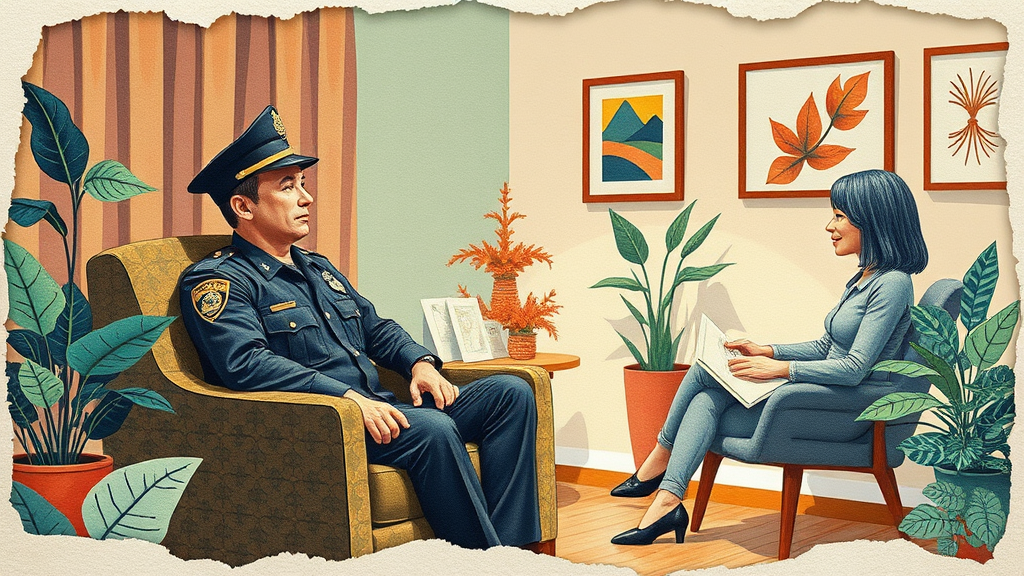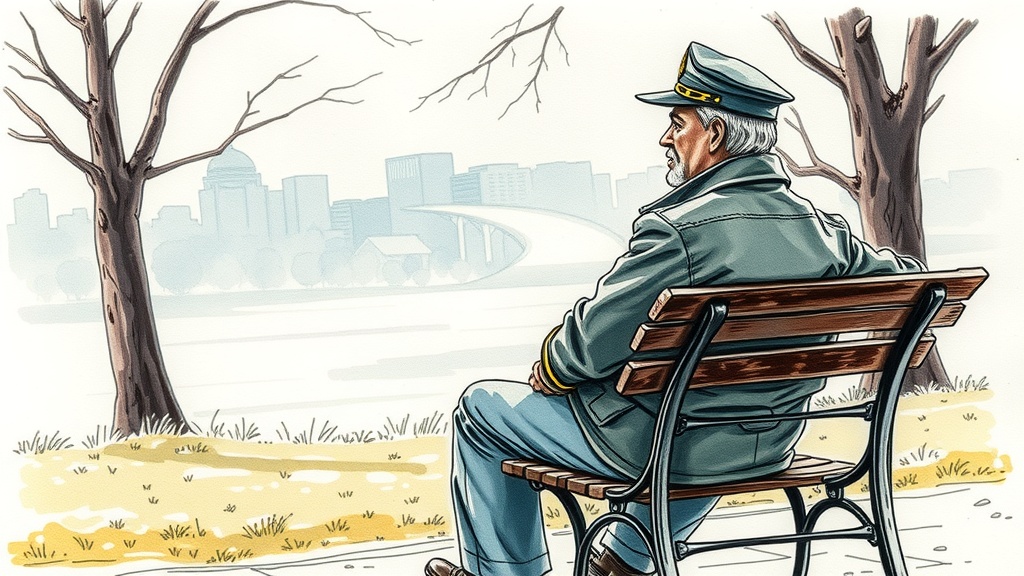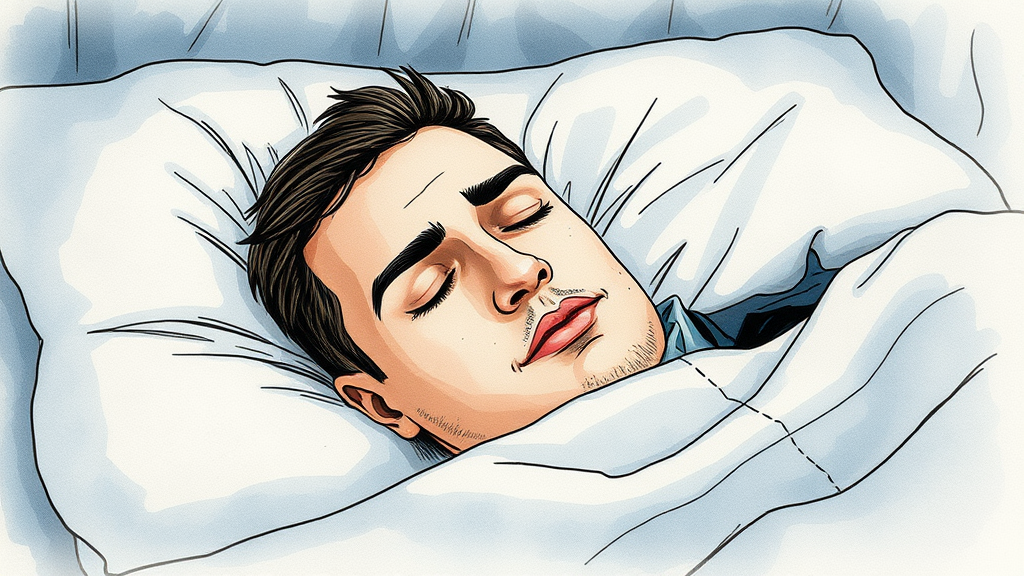· Don Davis · Police · 10 min read
From Hypervigilance to Home Life - Managing Irritability After Your Police Shift
Learn how police officers can manage hypervigilance and irritability, transitioning from demanding shifts to a calm home life with effective strategies.
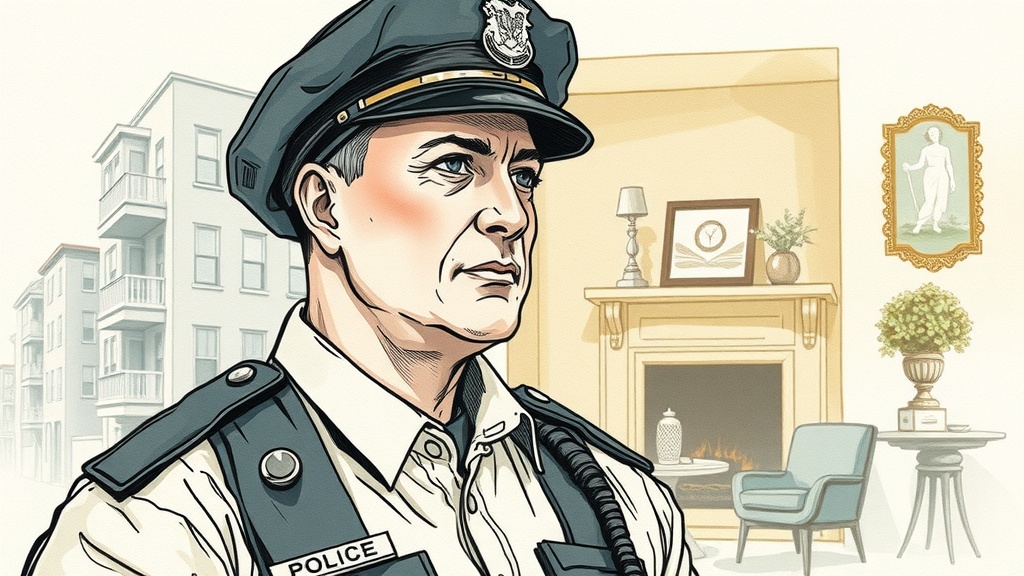
The Invisible Battle: Understanding Hypervigilance in Law Enforcement
The life of a police officer is unlike any other. It demands constant vigilance, split-second decision-making, and often, confrontation with the darker aspects of society. While this preparedness is crucial for officer safety and public protection, it comes at a significant cost: the pervasive state of police officer hypervigilance. This isn’t just about being alert; it’s a heightened state of sensory sensitivity, an automatic scanning of the environment for threats, and an amplified startle response. It’s the brain and body locked into a perpetual “on-duty” mode, designed for survival in high-stakes situations.
Physiologically, hypervigilance involves an activated sympathetic nervous system, releasing stress hormones like cortisol and adrenaline. While beneficial in a crisis, chronic activation leads to physical and mental exhaustion. Officers might experience elevated heart rates, muscle tension, disturbed sleep, and a constant feeling of unease. This state makes it incredibly difficult to relax, even when off duty, impacting every aspect of their personal lives. The irony is that the very trait that keeps them safe at work can undermine their well-being at home.
The Difficult Transition: When Work Follows You Home
For many law enforcement professionals, the biggest challenge isn’t the chaotic shift itself, but the transition from the adrenaline-fueled world of policing to the relative calm of home life. The brain, still wired for threat detection, struggles to disengage. This persistent alertness often manifests as law enforcement anger issues at home, irritability, or a short fuse. Minor everyday annoyances—a child’s loud play, a spouse’s simple question, a pet’s misbehavior—can feel like overwhelming threats, triggering disproportionate reactions.
This isn’t a moral failing; it’s a neurological overflow. The constant processing of potential threats at work leaves little bandwidth for the nuanced emotional demands of family interactions. Officers might withdraw, become emotionally numb, or lash out, creating a cycle of misunderstanding and resentment. This difficulty in transitioning can also lead to deeper issues, such as emotional shutdown, where officers find themselves disengaged or numb to their feelings, a phenomenon explored further when considering emotional shutdown in Alberta police officers. Understanding this biological mechanism is the first step towards managing its impact and fostering a healthier home environment.
Impact on Personal and Family Relationships
The ripple effects of unmanaged hypervigilance and irritability extend deeply into personal and family relationships. Spouses often report feeling like they’re walking on eggshells, unsure what might trigger an outburst or a withdrawal. Children may become confused or fearful, interpreting a parent’s distance or anger as a personal rejection rather than a symptom of occupational stress. Communication breaks down, intimacy wanes, and the home, instead of being a sanctuary, becomes another source of tension.
Partners may feel isolated, bearing the brunt of their loved one’s work-related stress without fully understanding its roots. This strain can lead to significant marital distress, affecting the well-being of the entire family unit. The hidden toll of such occupational stressors, including how PTSD affects partners and spouses, underscores the critical need for effective decompression and emotional regulation strategies. Left unaddressed, these issues can lead to chronic family conflict, emotional distance, and, in severe cases, family dissolution.
Strategies for How to Decompress After a Police Shift
Effective decompression is not a luxury; it’s a necessity for police officers to maintain their mental health and preserve their family lives. It involves creating intentional boundaries and routines to signal to the brain that the “threat” is over and it’s safe to relax.
Pre-Shift Preparation: Setting the Stage
While the focus is often on post-shift, preparing mentally before a shift can also aid the transition. This might include:
- Mindful Commute: Using the drive to work to mentally prepare, reviewing the day’s tasks, or listening to calming music.
- Deep Breaths: Taking a few intentional deep breaths before entering the station to center oneself.
- Setting Intentions: Briefly acknowledging the challenges ahead but also committing to leave work at work as much as possible.
Post-Shift Rituals: Creating a Buffer Zone
The period immediately after a shift is crucial. This “buffer zone” allows the mind to wind down.
- The Decompression Drive/Walk: Instead of rushing home, consider taking a slightly longer route, listening to a podcast unrelated to work, or simply driving in silence. This physical separation helps create mental distance.
- Physical Activity: Engaging in light to moderate physical exercise (e.g., a run, a gym session, even a brisk walk) can help metabolize stress hormones and release pent-up energy. It’s a powerful way to shift from a high-alert state to a more relaxed one.
- Mindful Practices: Dedicate 10-15 minutes to a mindfulness exercise, deep breathing, or progressive muscle relaxation. Apps like Calm or Headspace can be invaluable tools for guided meditations. These practices train the brain to disengage from hypervigilance.
- Hobbies and Interests: Reconnect with activities that bring joy and are completely unrelated to policing. This could be reading, gardening, playing an instrument, or engaging in a craft. These activities stimulate different parts of the brain and offer a sense of control and accomplishment outside of work.
- Scheduled “Venting Time”: Instead of bringing work stress directly into family interactions, schedule a brief, dedicated time to talk about the shift with a trusted friend, partner (if they’re open to it), or peer. Once the time is up, consciously shift focus. These decompression strategies are vital components of broader mental health strategies in policing, promoting overall well-being.
Cultivating Emotional Regulation for Cops: Practical Techniques
Beyond decompression, developing strong emotional regulation skills is paramount for officers. This involves understanding, processing, and responding to emotions in a healthy, adaptive way, rather than reacting impulsively.
Understanding Emotional Triggers
- Self-Awareness: Pay attention to what specific situations or thoughts reliably trigger irritability or anger after a shift. Is it feeling disrespected? A sense of injustice? The noise level? Recognizing patterns is the first step.
- Journaling: Keeping a brief journal can help identify these triggers and the corresponding emotional and physical responses.
Mindfulness and Grounding Techniques
- The 5-4-3-2-1 Method: When feeling overwhelmed or irritable, identify 5 things you can see, 4 things you can feel, 3 things you can hear, 2 things you can smell, and 1 thing you can taste. This pulls you into the present moment and away from intrusive thoughts.
- Body Scan Meditation: Lie down and bring awareness to each part of your body, noticing any tension and intentionally relaxing it. This helps release stored physical stress.
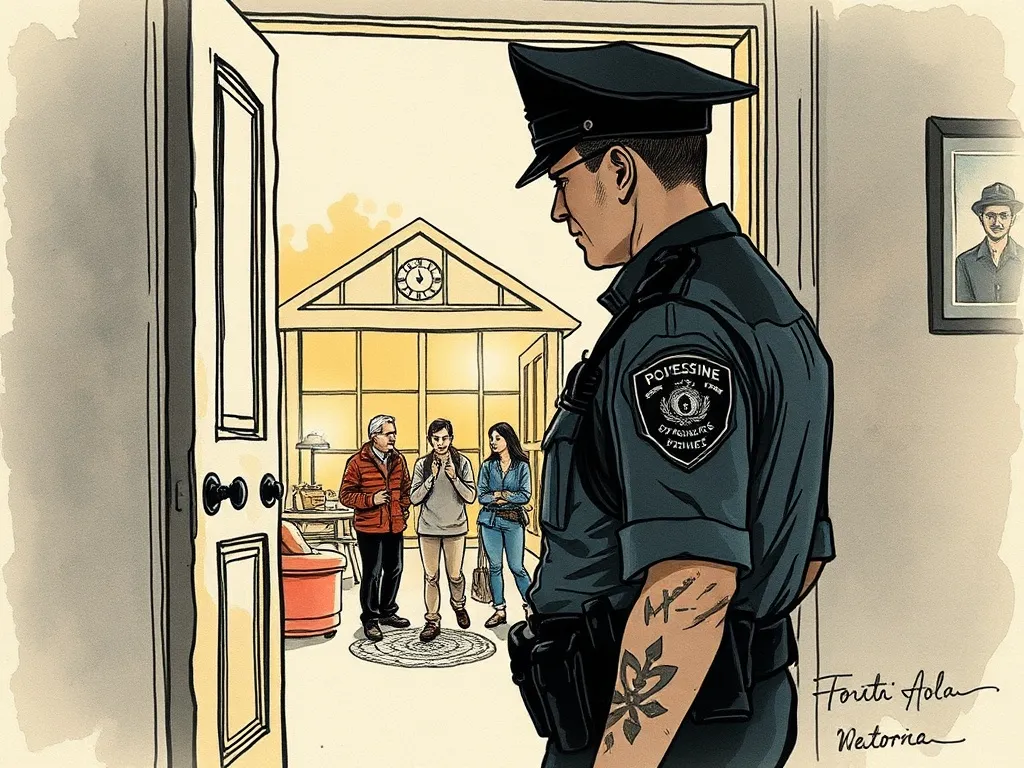
Cognitive Restructuring: Challenging Negative Thoughts
- Identify Distorted Thinking: Learn to recognize common cognitive distortions like “catastrophizing” (assuming the worst), “all-or-nothing thinking,” or “should statements.”
- Question and Reframe: Once identified, challenge these thoughts. Instead of “This always happens, I can’t stand it,” try “This is frustrating, but I can handle it. What’s one small step I can take?” This shifts focus from helplessness to problem-solving.
- Perspective-Taking: Try to see the situation from your family member’s perspective. They might not understand the unique stressors you face, and their actions are likely not intended to provoke.
Effective Communication Skills
- “I” Statements: Instead of “You always make me angry,” try “I feel overwhelmed when there’s a lot of noise right after I get home.” This expresses your feeling without blaming.
- Active Listening: Give your full attention when family members are speaking. This shows respect and helps de-escalate potential conflicts.
- Setting Boundaries: Communicate your need for decompression time. “I need 15 minutes to myself to unwind, then I’ll be ready to talk.” This is healthier than snapping due to overstimulation.
Seeking Professional Support
Sometimes, individual strategies aren’t enough. A therapist specializing in trauma or first responder issues can provide tailored strategies and a safe space to process difficult emotions. They can help navigate complex issues like police officer hypervigilance and prevent them from escalating into law enforcement anger issues at home. Exploring options for professional help is an important step in understanding the widespread impact of PTSD on Canadian police officers and their families and finding appropriate support.
Building a Resilient Support System
No officer should have to navigate these challenges alone. A strong support system is vital.
Peer Support Groups
Connecting with other officers who understand the unique pressures of the job can be incredibly validating. Peer support groups offer a safe space to share experiences, strategies, and provide mutual encouragement. Knowing you’re not alone in your struggles can significantly reduce feelings of isolation and shame.
Family Involvement
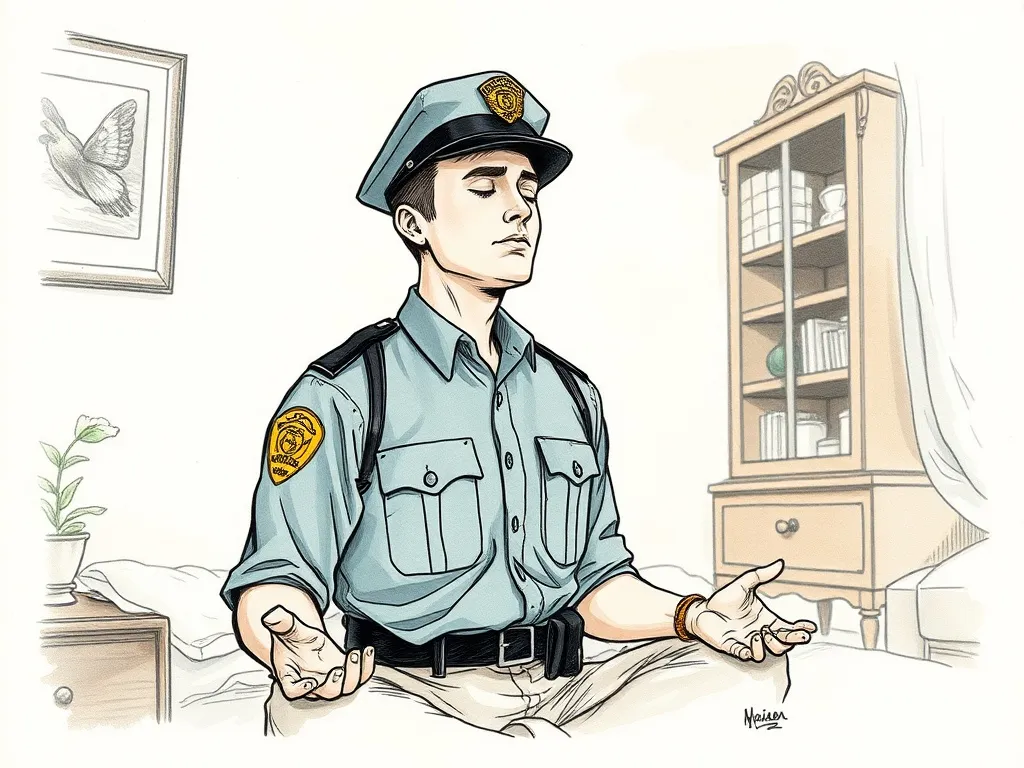
Educating family members about the realities of police officer hypervigilance and its effects can foster empathy and understanding. When families learn about the “why” behind the irritability, they can respond with patience and support rather than frustration. Consider family counseling if communication patterns have become deeply entrenched. Collaborative problem-solving—where the family works together to create a calmer home environment—can also be highly effective.
Recognizing When to Seek Help: Beyond Normal Stress
While occasional irritability is a normal human emotion, persistent anger, chronic withdrawal, severe sleep disturbances, or a significant decline in relationships are red flags. If your law enforcement anger issues at home are consistently impacting your personal life, job performance, or overall well-being, it’s time to seek professional intervention. Don’t wait until the breaking point. Early intervention can prevent minor issues from escalating into major crises. Awareness of the broader context of trauma, such as the impact of PTSD on Canadian correctional workers and their families, highlights the importance of addressing mental health challenges across all first responder roles. Mental health support is a sign of strength, not weakness.
Conclusion: A Path Towards Balance
Managing irritability and the lingering effects of police officer hypervigilance after a shift is an ongoing journey, not a destination. It requires intentional effort, self-awareness, and a willingness to seek support when needed. By implementing effective strategies for how to decompress after a police shift and cultivating robust emotional regulation for cops, officers can bridge the gap between their demanding professional lives and a harmonious home environment. Prioritizing mental well-being isn’t just about surviving the job; it’s about thriving in all aspects of life, ensuring that those who protect our communities can also protect their own peace and family happiness.
Frequently Asked Questions (FAQ)
Q1: What exactly is police officer hypervigilance?
Police officer hypervigilance is a heightened state of alertness and sensory sensitivity that law enforcement professionals develop to perceive and respond to threats. While crucial for safety on duty, it involves a constant scanning for danger, making it difficult to relax and disengage even when off work.
Q2: How can I prevent law enforcement anger issues at home?
Preventing law enforcement anger issues at home involves a multi-faceted approach: practicing deliberate decompression routines post-shift, identifying personal triggers, developing strong emotional regulation techniques (like mindfulness), and improving communication with family members about your needs. Seeking professional guidance can also be highly beneficial.
Q3: What are quick tips on how to decompress after a police shift?
Quick decompression tips include creating a buffer zone (e.g., a quiet drive), engaging in light physical activity to release stress, practicing 10-15 minutes of deep breathing or meditation, and immediately engaging in a non-work-related hobby or interest that you enjoy.
Q4: Are there specific emotional regulation for cops techniques?
Yes, emotional regulation for cops techniques include mindfulness and grounding exercises (like the 5-4-3-2-1 method), cognitive restructuring to challenge negative thoughts, and effective communication strategies (“I” statements, active listening). These help manage emotional responses and reduce impulsive reactions.
Q5: When should a police officer seek professional help for stress or irritability?
A police officer should seek professional help if irritability, anxiety, sleep problems, or withdrawal are persistent, significantly impacting relationships, job performance, or overall quality of life. Don’t wait until symptoms become severe; early intervention is key.

Don Davis
15+ years of emergency response experience. Passionate about connecting our first responder communities with critical resources. Author of hundreds of articles and guides on First Responders mental health care. When not responding to emergencies, you can find me playing with my dogs, hiking, or enjoying a good book.
Ready to connect with a provider?
Allow us to connect you with a provider who can help.
